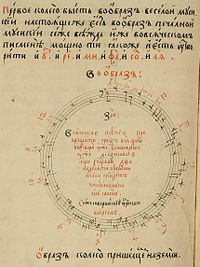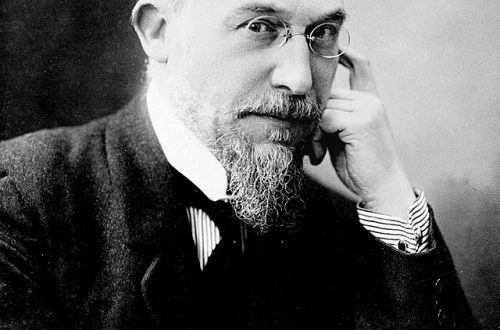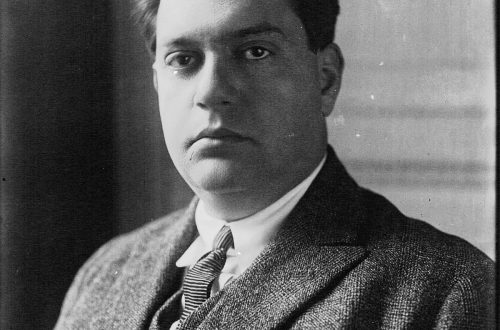
Nikolai Pavlovich Diletsky (Nikolai Diletsky) |
Nikolai Diletsky
There is Musikia, even with its voice it excites human hearts, ovo to joy, ovo to sadness or confusion … N. Diletsky
The name of N. Diletsky is associated with a deep renewal of domestic professional music in the XNUMXth century, when the deeply concentrated znamenny chant was replaced by the openly emotional sound of choral polyphony. The centuries-old tradition of monophonic singing has given way to a passion for the harmonious harmonies of the choir. The division of voices into parties gave the name to the new style – partes singing. The first major figure among the masters of partes writing is Nikolai Diletsky, a composer, scientist, musical educator, choral director (conductor). In his fate, living ties between Russian, Ukrainian and Polish cultures were realized, which nourished the flourishing of the partes style.
A native of Kyiv, Diletsky was educated at the Vilna Jesuit Academy (now Vilnius). Obviously, there he graduated from the humanities department before 1675, since he wrote about himself: “Sciences of the free student.” Subsequently, Diletsky worked for a long time in Russia – in Moscow, Smolensk (1677-78), then again in Moscow. According to some reports, the musician served as a choral director for the “eminent people” of the Stroganovs, who were famous for their choirs of “vociferous singers.” A man of progressive views, Diletsky belonged to the circle of famous figures of Russian culture of the XNUMXth century. Among his like-minded people are the author of the treatise “On Divine Singing According to the Order of Musician Concords” I. Korenev, who affirmed the aesthetics of the young partes style, the composer V. Titov, the creator of bright and soulful choral canvases, the writers Simeon Polotsky and S. Medvedev.
Although there is little information about the life of Diletsky, his musical compositions and scientific works recreate the appearance of the master. His credo is the affirmation of the idea of high professionalism, the awareness of the responsibility of a musician: “There are many such composers who compose without knowing the rules, using simple considerations, but this cannot be perfect, just as when a person who has learned rhetoric or ethics writes poetry … and the composer who creates without learning the rules of music. The one who travels along the road, not knowing the path, when two roads meet, doubts whether this is his path or the other, the same with the composer who has not studied the rules.
For the first time in the history of Russian music, the master of partes writing relies not only on the national tradition, but also on the experience of Western European musicians, and advocates for expanding his artistic horizons: “Now I’m starting grammar … based on the work of many skillful artists, creators of singing both the Orthodox Church and Roman, and many Latin books on music. Thus, Diletsky seeks to instill in the new generations of musicians a sense of belonging to the common path of development of European music. Using many achievements of Western European culture, the composer remains true to the Russian tradition of interpreting the choir: all his compositions were written for the choir a cappella, which was a common occurrence in Russian professional music of that time. The number of voices in Diletsky’s works is small: from four to eight. A similar composition is used in many partes compositions, it is based on the division of voices into 4 parts: treble, alto, tenor and bass, and only male and children’s voices participate in the choir. Despite such limitations, the sound palette of partes music is multicolored and full-sounding, especially in choir concertos. The effect of fascination is achieved in them due to contrasts – the opposition of powerful replicas of the whole choir and transparent ensemble episodes, chord and polyphonic presentation, even and odd sizes, changes of tonal and modal colors. Diletsky skillfully used this arsenal to create large works, marked by thoughtful musical dramaturgy and internal unity.
Among the works of the composer, the monumental and at the same time surprisingly harmonious “Resurrection” canon stands out. This many-part work is permeated with festivity, lyrical sincerity, and in some places – contagious fun. The music is filled with melodic song, kanta and folk-instrumental turns. With the help of many modal, timbre and melodic echoes between parts, Diletsky achieved an amazing integrity of a large choral canvas. Of the other works of the musician, several cycles of services (liturgies) are known today, partesny concerts “Thou hast entered the church”, “Like thy image”, “Come people”, the communion verse “Receive the Body of Christ”, “Cherubim”, a comic chant “My name there is breathlessness. Perhaps archival research will further expand our understanding of Diletsky’s work, but it is already clear today that he is a major musical and public figure and a great master of choral music, in whose work the partes style has reached maturity.
Diletsky’s striving for the future is felt not only in his musical searches, but also in his educational activities. Its most important result was the creation of the fundamental work “Musician Idea Grammar” (“Musician Grammar”), on which the master worked on various editions in the second half of the 1670s. The versatile erudition of the musician, knowledge of several languages, familiarity with a wide range of domestic and Western European musical samples allowed Diletsky to create a treatise that has no analogues in the domestic musical science of that era. For a long time this work was an indispensable collection of various theoretical information and practical recommendations for many generations of Russian composers. From the pages of an old manuscript, its author seems to be looking at us through the centuries, about whom the prominent medievalist V. Metalov wrote penetratingly: his sincere love for his work and the paternal love with which the author convinces the reader to delve deeper into the essence of the matter and honestly, sacredly continue this good deed.
N. Zabolotnaya





